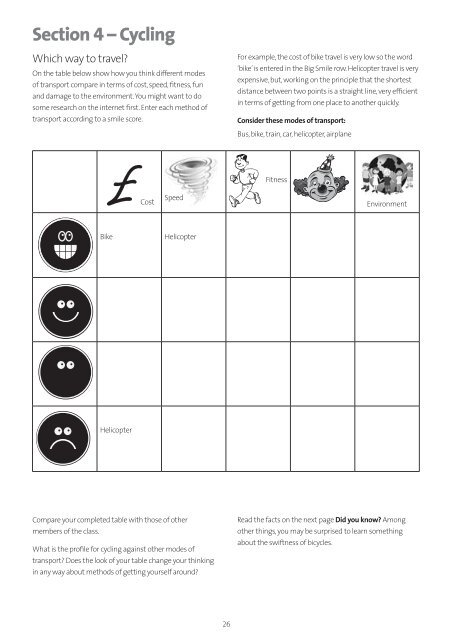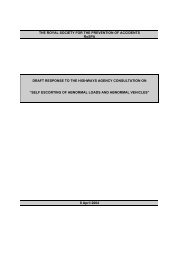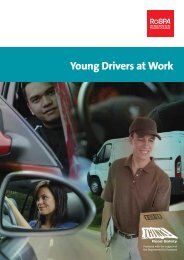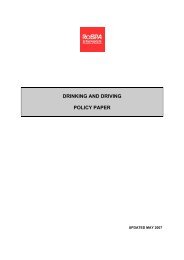Travel training - Key Stages 3 and 4 - RoSPA
Travel training - Key Stages 3 and 4 - RoSPA
Travel training - Key Stages 3 and 4 - RoSPA
You also want an ePaper? Increase the reach of your titles
YUMPU automatically turns print PDFs into web optimized ePapers that Google loves.
Section 4 – Cycling<br />
Which way to travel?<br />
On the table below show how you think different modes<br />
of transport compare in terms of cost, speed, fitness, fun<br />
<strong>and</strong> damage to the environment. You might want to do<br />
some research on the internet first. Enter each method of<br />
transport according to a smile score.<br />
For example, the cost of bike travel is very low so the word<br />
‘bike’ is entered in the Big Smile row. Helicopter travel is very<br />
expensive, but, working on the principle that the shortest<br />
distance between two points is a straight line, very efficient<br />
in terms of getting from one place to another quickly.<br />
Consider these modes of transport:<br />
Bus, bike, train, car, helicopter, airplane<br />
£ Cost<br />
Speed<br />
Environment<br />
Fun<br />
Fitness<br />
Bike<br />
Helicopter<br />
Helicopter<br />
Compare your completed table with those of other<br />
members of the class.<br />
What is the profile for cycling against other modes of<br />
transport? Does the look of your table change your thinking<br />
in any way about methods of getting yourself around?<br />
Read the facts on the next page Did you know? Among<br />
other things, you may be surprised to learn something<br />
about the swiftness of bicycles.<br />
26

















